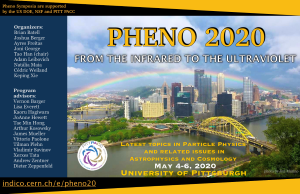Speaker
Description
Indirect dark matter detection methods are capable of shedding light on numerous dark sector properties. One such method is by searching for annihilation or decay products from regions of high dark matter concentration. A key feature in such analyses is the J-factor which encodes astrophysical properties. The J-factor develops different dependencies based on the nature of the dark sector. We consider a two-component dark sector where SM particles are created in "non-local" annihilations arising from boosted dark matter production. A natural consequence of this model is an increased dependence on halo size for the strength of an observed standard model signal. This added dependence can help to alleviate the tension between dwarf galaxy results and the galactic center excess.

